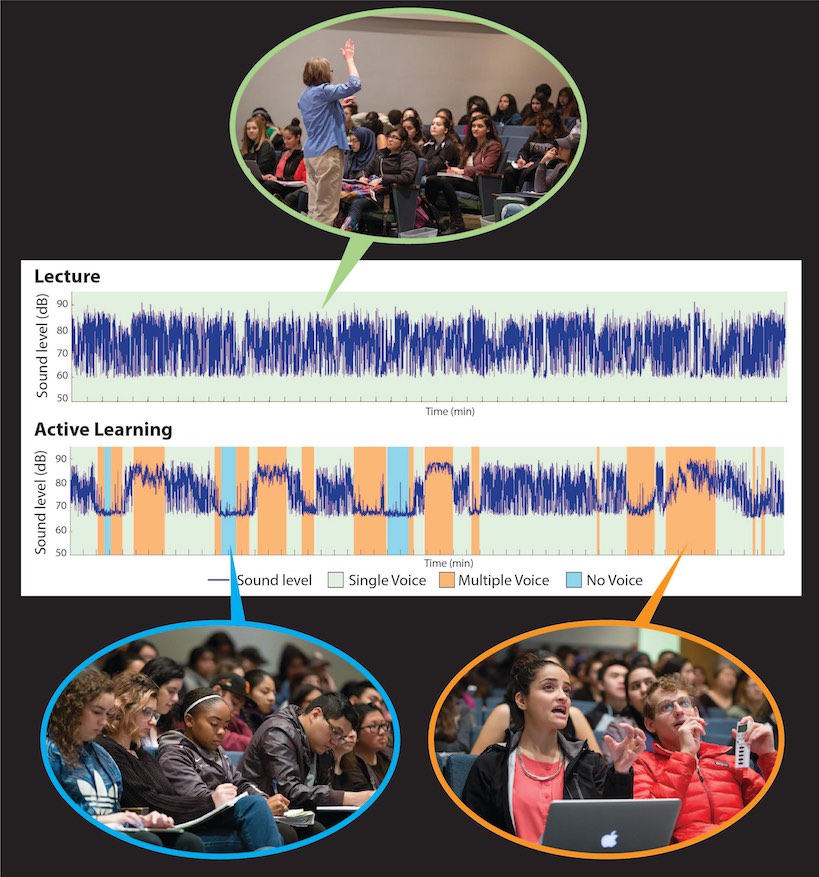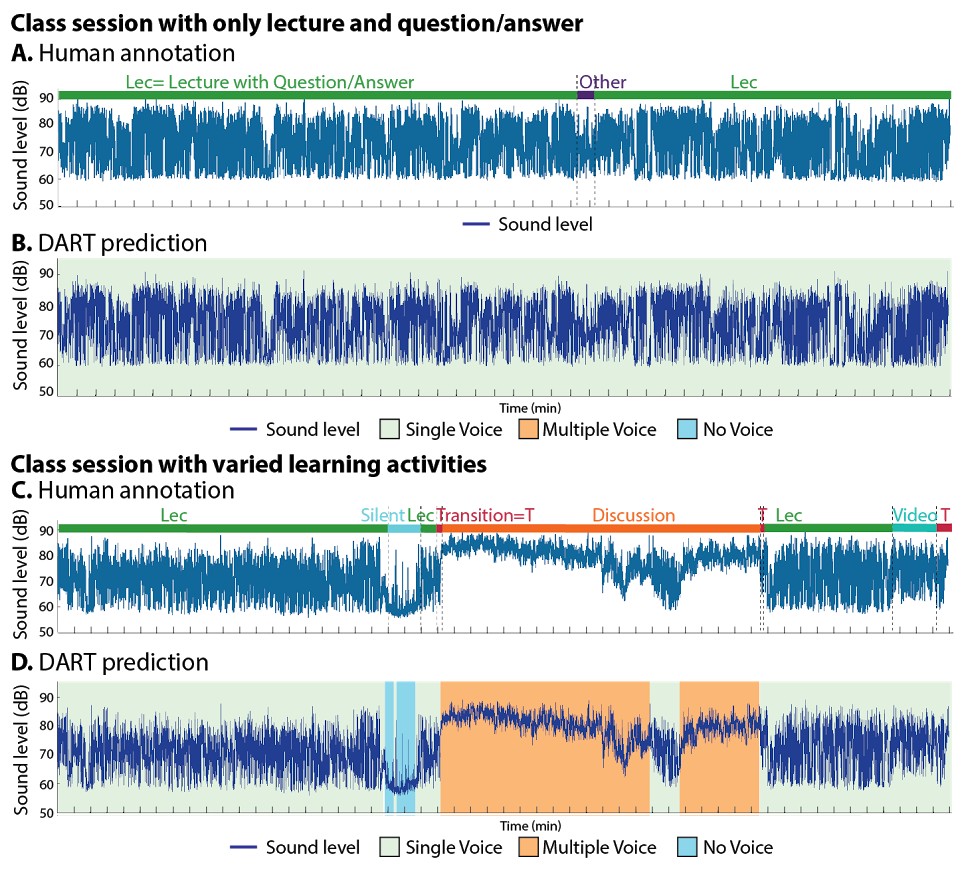DART
Decibel Analysis for Research in Teaching (DART) is a software tool that analyzes classroom sound to predict with ~90% accuracy the quantity of time spent on Single Voice (e.g. lecture), Multiple Voice (e.g. pair discussion), and No Voice (e.g. clicker, question thinking) activities.
What can DART do?

DART uses sound levels in classrooms (shown above with a dark blue line) to estimate the extent of active learning by classifying class time into the following three categories:
- Single voice: medium average decibel level and high variance (e.g. lecture with question/answer) Highlighted in green.
- Multiple voice: high average decibel level and low variance (e.g. pair or group discussions with many voices overlapping) Highlighted in orange.
- No voice: low average decibel level and low variance (e.g. minute paper, clicker response) Highlighted in blue.
Below are two examples of classroom audio recordings where you can compare DART predictions with human annotations. DART predictions match human annotations with high fidelity:

Want to learn more?
Try it for yourself!
For more information on the development and validation of DART, please see: Owens, Seidel, Wong et al. 2017. Classroom Sound Can Be Used to Classify Teaching Practices in College Science Courses. PNAS. vol. 114 no. 12, p. 3085–3090
PLEASE NOTE: Even if an instructor is attempting active learning, if there is no change in the sound level of the classroom, then DART will not be able to predict the presence of active learning. For more details, see "What kinds of errors does DART make?"




